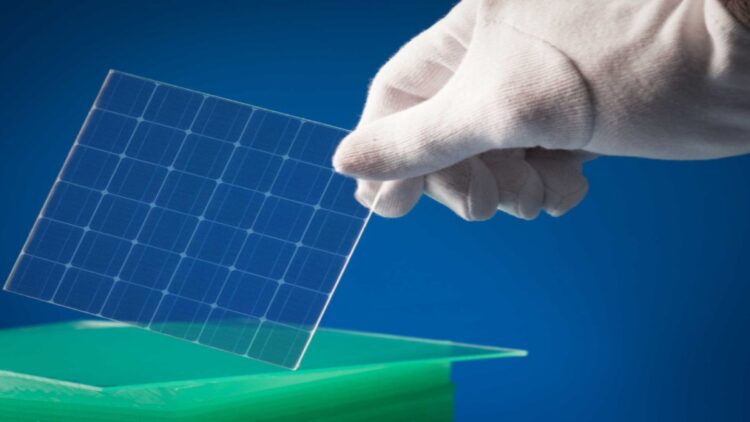Transparent solar panels are the newest advancement in solar technology and promise to change how we view renewable energy. These new flexible and nearly transparent panels produce electricity 1000 times more effectively than the standard solar cells. However, this innovation is not simply one of scale but is also about shifting the form of engagement with energy systems.
From windows that generate power to wearables that operate on the power generated endlessly, the transparent solar panel is turning all sorts of things into energy-producing devices and causing an intriguing domino effect across sectors.
Breaking barriers: How transparency redefines solar energy applications
However, the traditional solar panel has always had its small, bulky, and opaque drawbacks, and thus can only be installed on rooftops or vast areas. These barriers are overcome by transparent solar panels, especially near-infrared solar cells (NISCs). These panels are more than 70% transparent and can produce considerable power while integrating into surroundings.
This transformative extent of transparency can be realized using thin film materials such as transition metal dichalcogenides (TMDs). These 2D materials include tungsten disulfide and are known to have high light absorption with clarity. Scientists have worked on these panels so that they can offer the efficiency of the opaque panels while still being transparent.
Use cases in architecture best illustrate the change possible. Today, glass high rises can serve as power stations and, at the same time, be elegant structures. Cities that in the past could not afford to allocate space on rooftops to install renewable energy technologies wake up one day to find themselves in the middle of a solar power revolution. This combination of aesthetics and utility perfectly demonstrates that these panels are energy products and works of art.
It does not end with the buildings but is much more than buildings. Electric vehicles can incorporate transparent panels for windows or roofs to recharge their batteries. Bright clothing moves into the realm of science fiction with gadgets that harness energy from the sun, thus no need for recharging. The implications are tremendous and indicate that a new period of energy development has begun.
From lab to life: Overcoming hurdles for mainstream adoption
Manufacturing is another challenge. Most of the manufacturing plants across the globe are located in developed countries, hence exposing this sector to high risks of facing challenges from developed counterparts. The transparency of the solar panels is achieved through a series of layered materials, which is currently costly and time-consuming.
However, transition metal dichalcogenides have high efficiency, albeit at high production costs. To this end, researchers are looking for cheaper solutions and ways to produce energy at scale to meet the world’s needs.
Another essential characteristic is work intensity in large panels. The problem of scaling these cells leads to energy loss, which is a challenge that has been addressed by working on the aspect ratios of unit devices. These adjustments are essential to realize the technology for massive applications like skyscrapers or urban solar power.
However, there is hope. Partnerships between academic institutions and industries are now fueling innovation. It is anticipated that with the help of nanotechnology and material science progress, not only will all these issues be solved, but the possibilities of transparent solar cells will also be expanded.
Environmental harmony: How transparent panels reshape sustainability
This is what the impact of transparent solar panels looks like: it is revolutionary. This means that by integrating solar technology into ordinary objects, fossil fuel use could be significantly reduced. Previous panels are confined to specific areas; new ones make any surface – windows, clothes, gadgets – a renewable energy source.
It complies with international sustainable development objectives and minimizes the emission of greenhouse gases and climate change. Energy efficiency is achieved by making surfaces hitherto disregarded contribute to the solar potential; thus, they are fully utilized in the densely packed urban environment.
It also creates circularity because they are multi-purpose. For instance, charging ports and connection cables in smartphones or tablets could be made of glasses, and by doing so, we get rid of the extra wires that are causing the e-waste problem. They convert whole city landscapes into power-generating circuits on a larger scale, thus decentralizing the energy supply systems.
Various authors criticize the carbon footprint of manufacturing advanced materials such as TMDs. However, the long-term benefits of this project to the environment, including the continuous invention of ways of improving the production process, outweigh the above challenges. Bright windows with transparent solar panels aim at a cleaner and more connected world.
They are more than just an innovative technology; they are an innovation changing the paradigm for the future of solar energy. Their work of turning ordinary objects into power sources can change industries, cities, and even personal electronics. Overall, the progress achieved in attaining efficiency and the design of facilities leaves hope.
These panels might change our perception of energy consumption in the future as adoption scales and costs decline, becoming as ubiquitous as renewable energy in the air around us. This is our chance. The future of solar power is clear –literally.

